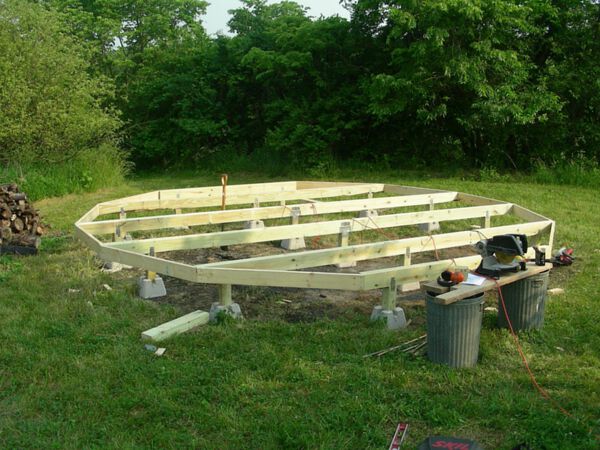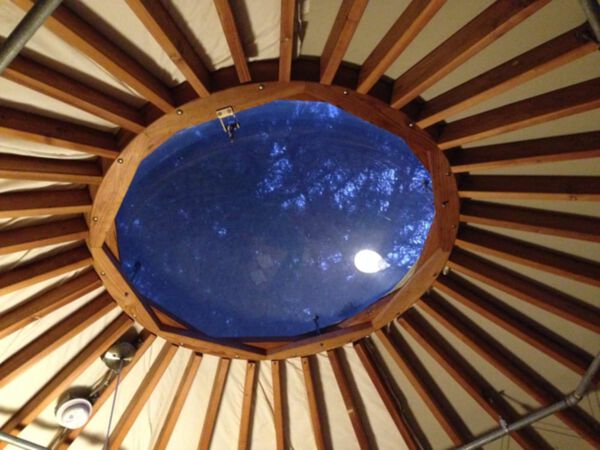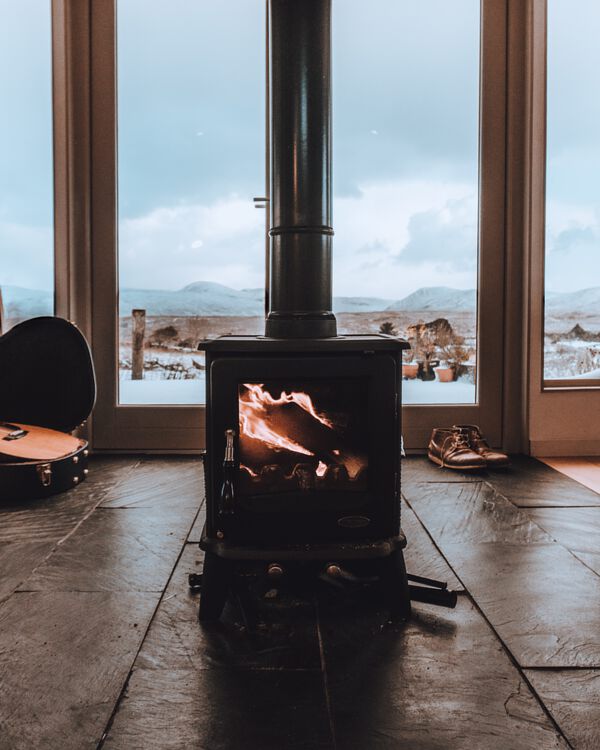If you are anything like me, you have fallen in love with yurts at first site, and have to have one. But, how much do these portable structures really cost. Let me break down what I’ve found for the true cost of buying and owning a yurt.
How much does a large yurt cost? Pre-built yurts cost anywhere from $4,000 to more than $10,000 depending on size and amenities. Typically per square foot costs are between $50–$15, which larger yurts being more cost efficient.
However, the cost for a pre-built yurt is not the end of the story. DIYing a yurt is definitely possible for the moderately crafty and price conscious individuals. Likewise, additional costs such as decking, stoves, structural support, insulation, and shipping are likely to sneak up on you if you don’t plan ahead.
What Are the Costs of Buying and Owning a Yurt
Yurts can be an extremely cost effective yet comfortable structure. Originating in the frozen steppes of Russia, they are capable of serving the harshest climates while maintaining extreme portability.
When budgeting for a large yurt, you need to consider a large number of factors including the overall size of the yurt, the amenities such as windows, doors, insulation, the skylight at the top of the roof, heating, as well as shipping, deck/floor, and installation costs. Depending on the options you choose, the upgrades and installation costs could more than double the overall cost of the yurt installation.
I recommend budgeting at least as much as the cost of the yurt for addition costs of upgrade features, shipping, and installation. Of course, if you have an instinct for DIY and the ability for scavenging materials, then you might be able to do most or all of the work yourself for a reduced cost, which is the route that I chose to go for my own yurt.
| Item | Cost |
|---|---|
| 16’ Yurt | $7,995 |
| Door upgrade | $275 |
| Platic Windows | $500 |
| Dome Opener | $165 |
| Crate | $400 |
| Shipping | $650 |
| 16’ deck w/ 4’ patio | $2750 |
| Wood stove w/ pipe chimeny | $1200 |
| Total | $13,935 |
Here is a simple deck pricing calculator to help with budgeting.
How much does a DIY yurt cost?
The total cost of a DIY yurt kit depends again on the size, and how much work you are willing, or able to do yourself.
The best resource I found when it comes to buying a yurt kit is a small company in Southern Oregon named Camping Yurts. Camping Yurts offers a wide range of options of canvas yurts from just paper plans all the way up to completed kits. The thing I liked best about their yurt kits is that you can buy pieces as you need, so if you run in to difficulty with any particular part of the build, you can just buy in that part of it and get on with the rest. It adds a bit of safety to the whole build process.
Going by their advertised pricing, a complete DIY kit, where you are supplied with all the materials but have to do a good portion of the wood working yourself, only costs $1,800 for a 16’ yurt. Likewise, for a pre-build kit of the same build, without any particular amenities, would run you $3,200 for the same 16’ size.
How much does yurt shipping cost?
A yurt, although portable, can be a bulk item and is difficult to ship. Large yurts, for the most part, will not ship through typical ground carriers like UPS or the US Post Office. For items this large you will be looking at crating and freight shipping charges.
Crating Fee
It is standard for companies in this space to charge an extra “crating fee” which covers the cost of protecting the yurt while it is traveling. Crating is typically starts around $200–300, and scales up with the overall size of the yurt. If you are ordering a large yurt with glass windows or doors, you are probably in for an extra fee as well. For instance Pacific Yurts, one of the more prominent yurt produces in the country, adds $125 per window to the crating fee.
Freight Shipping
Shipping costs depend quite a bit on the size of the crate and the distance that it is traveling. Freight shipping costs for your large yurt can be as little as $200 and up to more than $1000. Most yurt producers, if not all, in the United States ship directly from their factory and don’t have regional distributors. This means that if you are looking to be frugal with your purchase, then choosing a maker that operates in your area can save you hundreds of dollars on the price of your yurt shipping.
Will Call Pickup
Many producers also allow on site pick up at no additional charge. If you live near by the factory, or are willing to make a road trip, then you might be able to avoid additional shipping charges altogether. If you are planning on going this route, but sure to check with the yurt manufacturer before you make the order. Some providers have minimum size requirements or other conditions for will call pickups, so be sure you have everything in line before you budget out the shipping costs.
How much does a yurt platform / deck cost?
Besides the yurt itself, one of the most major costs would be the deck or floor of your large yurt. Although a dirt floor might be OK for a temporary installation, but for use as a residence or longer term installations taking the time to build a platform for the yurt will make a huge difference in terms of comfort and longevity.
Building a raised deck brings a number of advantages to a yurt:
- Keeps the floor dry
- Allows for in floor insulation
- Makes it much easier to seal the walls of the yurt to the ground.
Building a yurt deck is something you will generally need to do yourself, and purchase your own materials. Otherwise, this would be the domain of a carpenter or contractor to build, in which case bids can vary tremendously.
DIY there are two options, a more professional look with new materials or an economical up cycling option with pallets or other scrap wood. The price for a large yurt platform is typically around $2,000 – $4,000 with new materials but can be as little as a few hundred dollars if you are using mostly recycled materials.

DIY Yurt Deck Platform from New Materials
In my opinion, the best way to build a yurt deck is with piers and posts similarly to how residential decks are constructed. (See photo above.) This method is both fast to build, strong, and widely understood. There are many deck building tutorials online and on YouTube that would help you through the process.
The cost of this method depends on the decking material you choose. Decking material can cost between $2 – $30 per square foot, with a total installed cost including around $20 – $50 per square foot including hardware and beams. Common options for decking includes:
- Cedar
- Treated Pine
- Composite
- Redwood
Because the bottom of the deck will still be partially exposed to weather, I recommend building the entire floor out of weather resistant lumber. But at least you will need to use treated or exterior grade lumber for the outside deck or exposed components.
Palette Floating Decks
The cheapest route to go would be to use pallets, cinder blocks, and plywood. Pallets are typically free, while the plywood and blocks can be had cheaply for as little as a few hundred dollars. Or even scavenged from contraction surplus in your area or “re-store” situations.
One way to construct a deck using this method is to place and carefully level cinder blocks either 42" or 48" apart in a grid, depending on what size pallets you have. This way you can support each pallet by the corners. Then, place the pallets on on the blocks and nail or screw the plywood directly to the pallets from the top. In this way you have a semi-rigid structure floating on top of cinder blocks
While this structure may not last forever, it is easy and cheap to replace. And, it has the potential to be unscrewed and hauled away when necessary.

Recommended Yurt Accessories
Like buying a new car, most yurt manufacturers offer a plethora of optional add ons and upgrades to their kits. In my experience, these are the upgrade that I find to be worth the extra cost. I’ll cover why when you might need them, and why they are worth the price.
Upgraded Door
A properly installed and outfitted yurt can be quite warm in the winter. But most often the weak link is the door. Yurts companies are tempted to skimp on the front door in terms of insulation value and weatherproofing between the door and the door frame.
If your yurt company offers the option for an upgraded weather proof door, especially if the door is a non-standard size as many yurt doors are, then it is often worth it to get the upgrade installed by the factory. Don’t assume you will be able to buy a suitable replacement at Lowes or Home Depot. Since yurts are designed to have shorter walls and taller roofs that most houses, finding a door to beef up your winter warmth can easily become and expense and time consuming chore that could have been solved right away by a factory upgrade.
However, if you have the skills to build and install your own door, or your yurt door is a standard size door and you know how to replace it, only then would I consider doing it yourself.
Skylight / Dome
If you live in a warm climate, or a northern dark climate, then I consider a skylight dome to be my number one upgrade. While, depending on the wall materials, you may get light in through your walls and windows, having a skylight in a yurt is so easy to add and add so much natural light that it is almost worth it no matter the cost.
Additionally, in the summer, when you need a bit of extra air flow to cool down the yurt, nothing works better than an open-able dome. The cross air flow allowed by cool air entering a lower open door / window while hot air is rising out of the top of the yurt is by far the best way to cool down a hot yurt on a summer afternoon.
In my opinion I wouldn’t buy a yurt unless it has a dome window that can be opened at the apex of the roof.
Insulation
Yurts typically have little or no insulation, almost like a tent. While traditional yurts were made of many layers of thick felt, which kept out the cold, modern yurts come with almost no insulation at the base level.
If you are buying your yurt or making your own, spending a bit of extra time and money on a decent layer of internal insulation often makes the difference between a yurt feeling like a tent or feeling like a comfy home in the winter month’s.
Because of the huge level of added comfort, as well the massive reduction of heating costs and effort provided by yurt insulation, it is absolutely on my must haves for yurt options.
Also, don’t forget to add insulation on the bottom of your yurt. Whether traditional bat insulation on the bottom of your platform, rigid foam insulation, or even just a stack of rugs over the dirt floor, warm feet are worth the effort.
Windows
While traditional yurts didn’t sport windows of any kind, just a single door and an opening in the top center for smoke to escape, tacking on a few traditional glass windows in your yurt build is worth considering.
One thing I do not recommend is tent style flap windows, which are hard to insulate and may come undone in stormy weather. If you are opting for the window upgrade, I would take the leap to glass or rigid plastic windows which offer much better insulation value in addition to the possibility for a better seal with the tent fabric.
Having windows in your yurt can do a lot to make your temporary structure seem more like a real home, and serves to impress the family and neighbors which, lets be honest, helps things go a lot more smoothly at times. While a few windows may not convince stubborn relatives to switch over to a yurt full time themselves, a bit of elegance and sophistication in your tent home may help smooth over a few rough patches.
Not to mention that the windows let in more natural light and let you connect the beauty of nature around you. And that’s why you moved in to the yurt, right?
However, of all my recommended upgrades this is probably the least essential and usually has the less bang for your buck. If you are on a tight budget, go with the overhead dome window and let the wall windows slide.
Do I need to buy extra supports?
Many yurt manufacturers offer additional support poles as an optional add, which are designed for use in snowy climates. If you live in a snowy climate, is it natural to ask whether it is worth the extra expense to shell out for this upgrade, or whether you can get buy with just the base kit.
Traditional yurts have two center support beams, but operated just fine in snowy climates without more poles providing strength. Most manufactured western designs will work just fine in winter climates when they are heated constantly. The key to how traditional yurts work in cold climates is that through constant heating any snow load is melted through the relatively thin walls.
However, if you intend to leave you yurt up throughout the winter when snow may accumulate, and you don’t plan to warm you yurt the whole time, then it is probably the best move to go with additional snow support structures. There is no worse feeling than coming home to a yurt that has been caved in and significantly damaged by too much snow accumulation on the roof.

How much does it cost for a wood stove to use in a yurt?
While almost any small wood stove or tent stove would serve just fine as the main heat for a yurt, you can buy a ready made yurt wood stove in the range of $150 – $400.
If the stove you are buying isn’t sold by your yurt manufacturer specifically for use in the yurt model your are buying, be sure to be aware of the amount and variety of chimney pipes included with the stoves. You will need enough of the right shape to either make it’s way up and out the center of the apex of the roof, out the side and up. Additional segments of pipe can go for $10 –$50
You will also need a segment of triple walled pipe to let the pipe safely interface with the tent fabric, which can be another $50 – $100 right there if not already included with your stove kit.
Related Questions
How much is it to buy a yurt?
Yurt costs vary greatly based on size, but range from a few thousand dollars to more than $10,000 for very large yurts or yurts with higher end features. If you have some sewing or wood working skills it is also possible to build your own yurt fairly easily.
How long does a yurt last?
Yurts can last for decades in proper conditions. Sunshine can be the biggest enemy of vinyl or canvas skinned yurts, which causes excessive breakdown. While water is tough on the wooden structure. Even in the harshet conditions most commercial yurts will last 5 years or more before requiring partial replacement.


